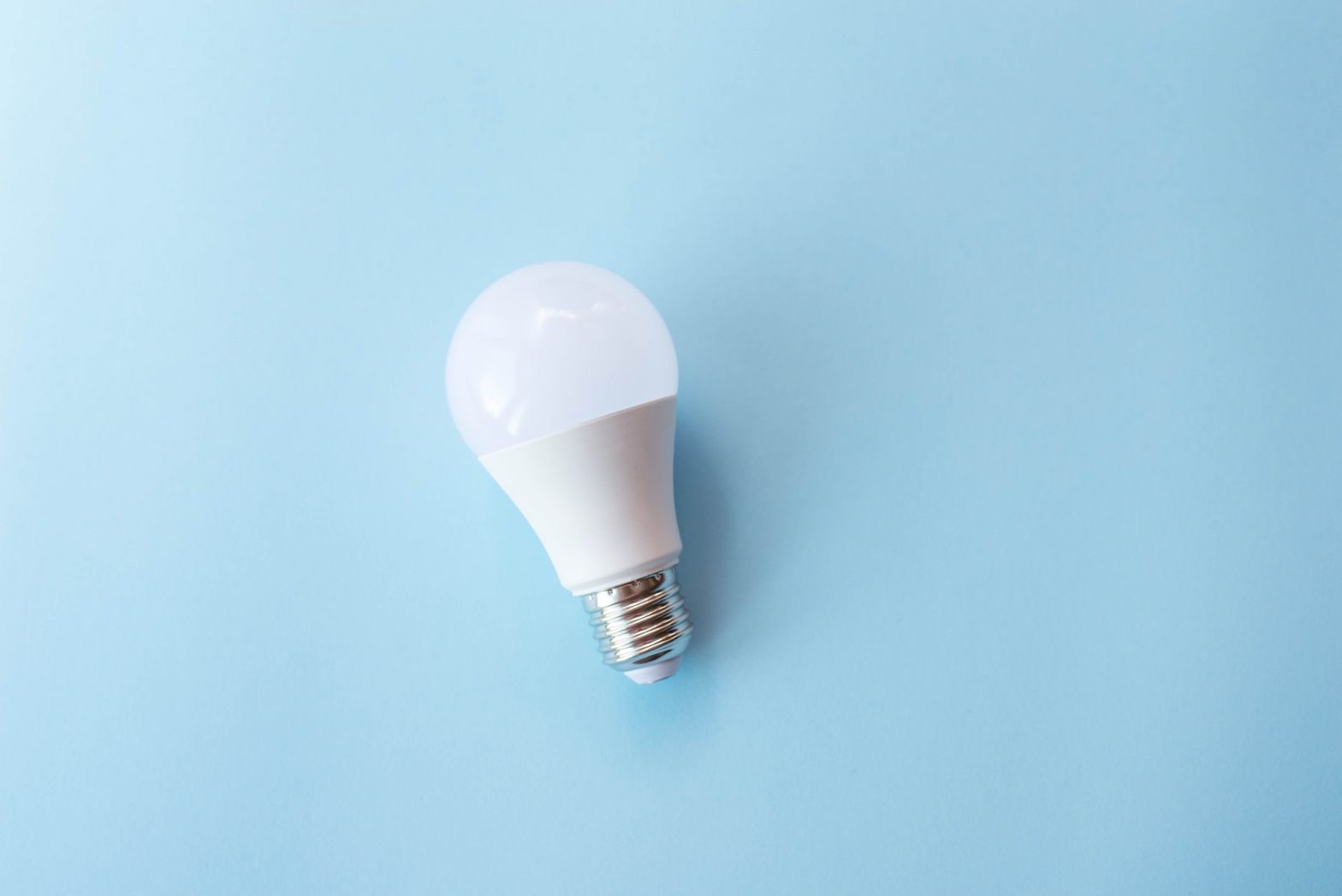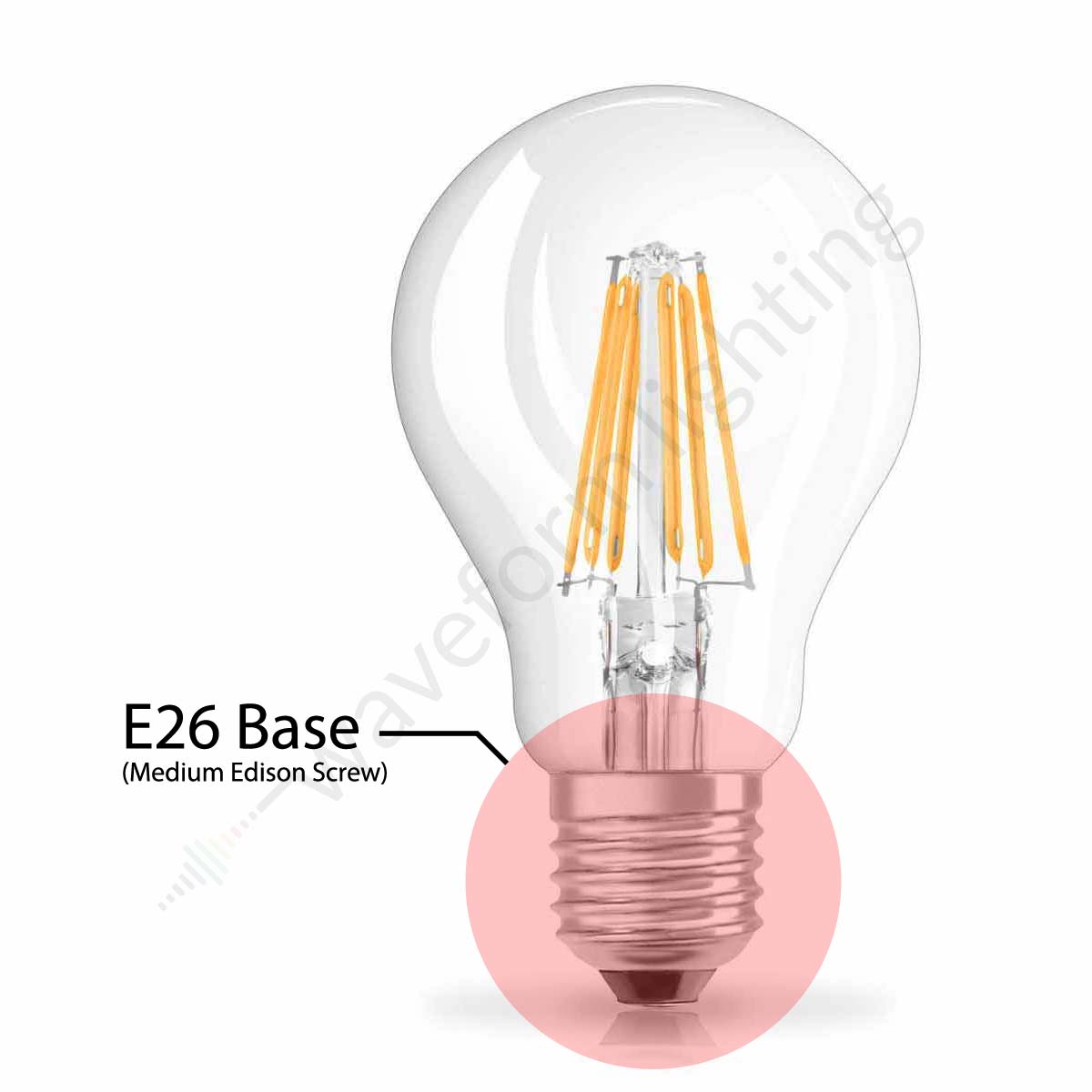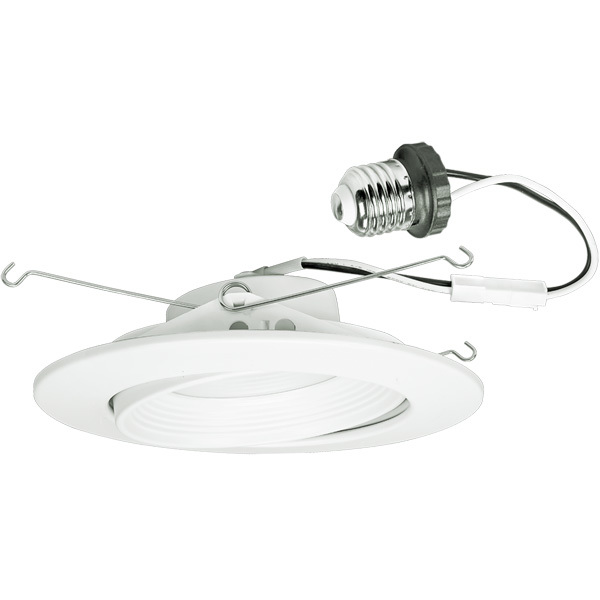
What is an E26 Bulb, and What Does it Look Like?
This post contains affiliate links. If you use these links to buy something we may earn a commission.
If you're looking to purchase a new bulb, you may have come across the term "E26" - but you might be unsure as to what it means. Read on to find out!
What is an E26 bulb?
The term E26 refers to a light bulb's cap or base - the bulb component that allows for both electrical and mechanical contact. The letter "E" in E26 refers to Edison Screw, the most standard of lamp bases, while the numerical "26" refers to its diameter in millimeters (approximately 1 inch).
E26 is also commonly referred to as a Medium Edison Screw (MES).

An E26 bulb, therefore, is any bulb or lamp that utilizes the E26 cap or base for mounting and electrical contact.
You can most instantly recognize an E26 bulb by looking at the bottom, or non-light emitting side of the bulb. If you see a metallic base with screw threads, approximately 1 inch in diameter, you most likely have an E26 bulb. Another way to be sure is to check the printing on the bulb - along with the wattage and brightness, manufacturers will usually print "E26" to ensure they are safely used with appropriate lampholders.
E26 bulbs are some of most widely used lamp bases in North America and Japan, and other countries that commonly use 120V AC. (See E27 bulbs for Europe and 240V AC). Although previously they were most commonly used with incandescent lamps, fluorescent CFL lamps and LED lamps have also continued to adopt the E26 lamp base.
Today, A19 LED lamps, BR LED lamps, PAR LED lamps frequently use E26 bases.
E26 does not refer to the bulb's shape!
An E26 designation only refers to its base, or contact point with the lampholder. A wide range of bulbs and lamps can use an E26 base despite having different shapes and sizes. Below is an example of an LED downlight that uses an E26 "plug" for its electrical connection.

How does an E26 bulb work?
E26 bulbs work like any type of Edison Screw base. Once the lamp's screw is aligned with the fixture socket, rotate the the lamp clockwise until fully secure.
The E26 screw threads are right-hand threads, and in addition to providing the mechanical support, also act as the neutral electrical path (assuming the fixture is wired properly).
Additionally, a metal contact point approximately 10 mm in diameter is located at the bottom of the screw. This contact point acts as the "hot" or "live" electrical input.
On the inside of the bulb, electrical wires are soldered or welded onto the screw threads and bottom contact point. These wires then lead to the filament in an incandescent, or internal electronics for CFL and LED E26 bulbs.
What are the advantages of E26?
E26 bulbs are some of the most common lamp types, meaning that finding an appropriate lampholder or fixture is typically quite straightforward. Additionally, installation is usually very straightforward, and requires no tools or assembly.
Edison Screw bases are some of the most secure ways to mount a bulb, due to the strength and rigidity of the screw threads. This makes them particularly suitable for locations where vibrations may be present. Additionally, a tight fit in the screw base ensures that moisture and debris are unlikely to enter the contact points, reducing the probability of electrical failures.
Where do I buy E26 bulbs?
E26 bulbs are some of the most universally used lamp bases. However, in addition to the lamp base, however, it is important to decide whether to purchase an A-style lamp or a directional lamp.
E26 bulbs are available for purchase at your local hardware or electronic appliance store, or directly from our website (see A19 lamps or BR30 lamps).
E26 Standards and Dimensions
E26 standards are defined by the International Electrotechnical Commission (IEC) under standard 7004-21A-2. They specifically govern the exact dimensions to which the E26 lamp bases should be manufactured to.
T1: min 19.56 mm
T: min 19.56 mm
H: min 9.14 mm; max 11.56 mm
L: min 15.24 mm; max 17.01 mm
C: min 3.25 mm
r: 1.191 mm
d1: 24.72 mm
d: min 26.05 mm; max 26.41 mm
If you're looking to purchase a new bulb, you may have come across the term "E26" - but you might be unsure as to what it means. Read on to find out!
What is an E26 bulb?
The term E26 refers to a light bulb's cap or base - the bulb component that allows for both electrical and mechanical contact. The letter "E" in E26 refers to Edison Screw, the most standard of lamp bases, while the numerical "26" refers to its diameter in millimeters (approximately 1 inch).
E26 is also commonly referred to as a Medium Edison Screw (MES).

An E26 bulb, therefore, is any bulb or lamp that utilizes the E26 cap or base for mounting and electrical contact.
You can most instantly recognize an E26 bulb by looking at the bottom, or non-light emitting side of the bulb. If you see a metallic base with screw threads, approximately 1 inch in diameter, you most likely have an E26 bulb. Another way to be sure is to check the printing on the bulb - along with the wattage and brightness, manufacturers will usually print "E26" to ensure they are safely used with appropriate lampholders.
E26 bulbs are some of most widely used lamp bases in North America and Japan, and other countries that commonly use 120V AC. (See E27 bulbs for Europe and 240V AC). Although previously they were most commonly used with incandescent lamps, fluorescent CFL lamps and LED lamps have also continued to adopt the E26 lamp base.
Today, A19 LED lamps, BR LED lamps, PAR LED lamps frequently use E26 bases.
E26 does not refer to the bulb's shape!
An E26 designation only refers to its base, or contact point with the lampholder. A wide range of bulbs and lamps can use an E26 base despite having different shapes and sizes. Below is an example of an LED downlight that uses an E26 "plug" for its electrical connection.

How does an E26 bulb work?
E26 bulbs work like any type of Edison Screw base. Once the lamp's screw is aligned with the fixture socket, rotate the the lamp clockwise until fully secure.
The E26 screw threads are right-hand threads, and in addition to providing the mechanical support, also act as the neutral electrical path (assuming the fixture is wired properly).
Additionally, a metal contact point approximately 10 mm in diameter is located at the bottom of the screw. This contact point acts as the "hot" or "live" electrical input.
On the inside of the bulb, electrical wires are soldered or welded onto the screw threads and bottom contact point. These wires then lead to the filament in an incandescent, or internal electronics for CFL and LED E26 bulbs.
What are the advantages of E26?
E26 bulbs are some of the most common lamp types, meaning that finding an appropriate lampholder or fixture is typically quite straightforward. Additionally, installation is usually very straightforward, and requires no tools or assembly.
Edison Screw bases are some of the most secure ways to mount a bulb, due to the strength and rigidity of the screw threads. This makes them particularly suitable for locations where vibrations may be present. Additionally, a tight fit in the screw base ensures that moisture and debris are unlikely to enter the contact points, reducing the probability of electrical failures.
Where do I buy E26 bulbs?
E26 bulbs are some of the most universally used lamp bases. However, in addition to the lamp base, however, it is important to decide whether to purchase an A-style lamp or a directional lamp.
E26 bulbs are available for purchase at your local hardware or electronic appliance store, or directly from our website (see A19 lamps or BR30 lamps).
E26 Standards and Dimensions
E26 standards are defined by the International Electrotechnical Commission (IEC) under standard 7004-21A-2. They specifically govern the exact dimensions to which the E26 lamp bases should be manufactured to.
T1: min 19.56 mm
T: min 19.56 mm
H: min 9.14 mm; max 11.56 mm
L: min 15.24 mm; max 17.01 mm
C: min 3.25 mm
r: 1.191 mm
d1: 24.72 mm
d: min 26.05 mm; max 26.41 mm
Other Posts
Browse Waveform Lighting Products
A-Series LED Bulbs
Our A19 and A21 lamps fit in standard lamp fixtures and are perfect for floor and desk lamp fixtures.
Candelabra LED Bulbs
Our candelabra LED bulbs offer soft and warm light output in a decorative bulb style that fits E12 lamp fixtures.
BR30 LED Lamps
BR30 lamps are ceiling lamps that fit in residential and commercial fixtures with 4-inch or wider openings.
